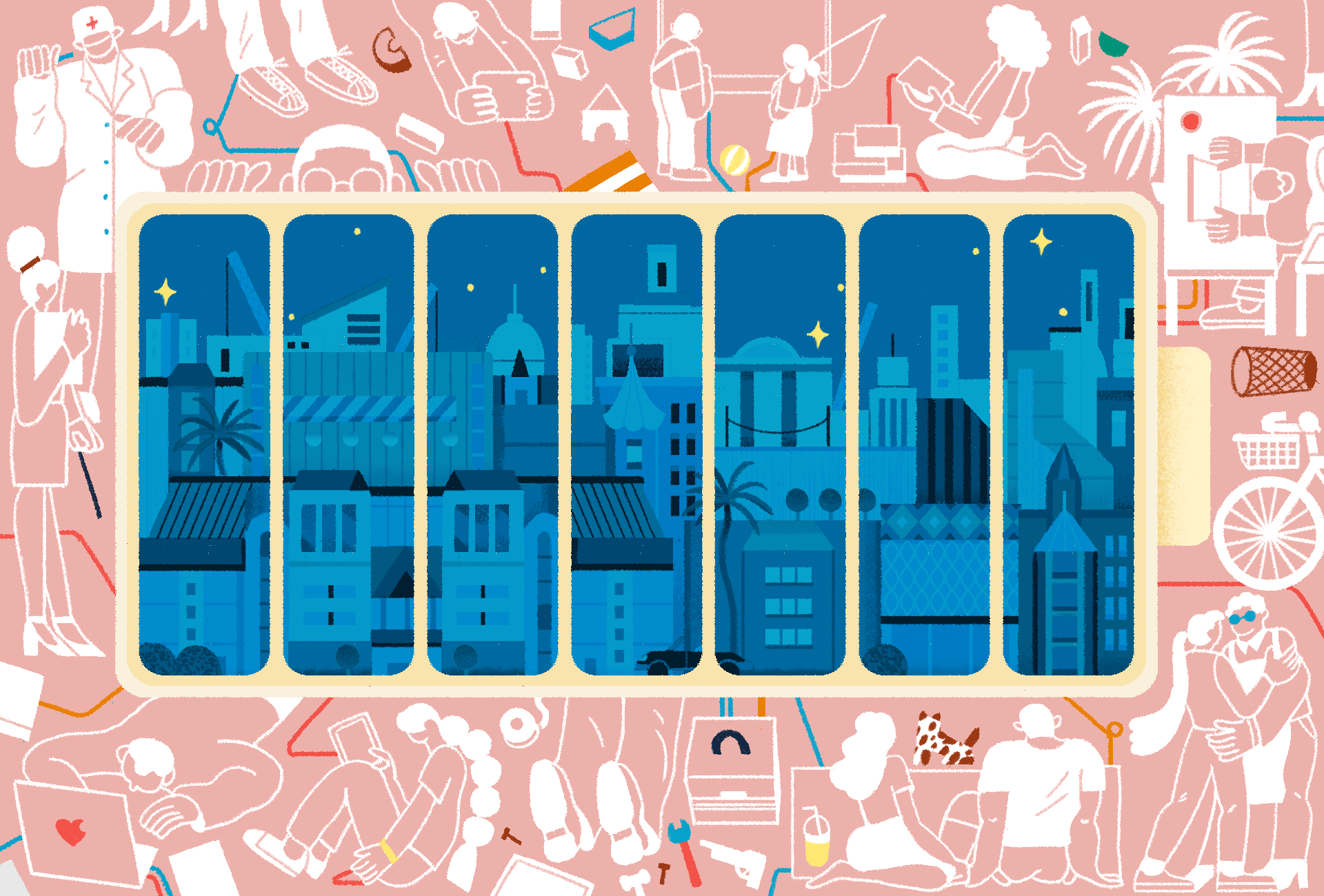We’ll sit tables apart at near-empty restaurants, wear medical masks in public, keep a six-foot distance from others while shopping, and submit to routine temperature checks at work. These scenes may look more like an episode of Black Mirror, but the world’s new reality amid the coronavirus pandemic (COVID-19) is forcing the global society to confront issues beyond the scope of science fiction to revive communities slowly, safely and sustainably.
“We have long known about the dangers of epidemics, both historical and contemporary. Many parts of the world have been coping with serious infectious diseases prior to the current epidemic, including malaria,” says Gregory Knapp, director of sustainability studies at The University of Texas at Austin. “With a few exceptions (H1N1, AIDS), we in the United States have been relatively spared in recent years, so it is perhaps understandable that there has been more of a focus on other challenges to sustainability.”
The popular narrative on sustainability has focused on the environment, natural vs. unnatural. But sustainability, Knapp clarifies, is much larger and all encompassing. It involves a delicate balance of a network of issues that intersect and interact with each other — health, inequality, technology and community.
Pandemic Preparedness
“The Ebola crisis in 2014 should have been a wake-up call for the federal government,” argues Patrick McDonald, an associate professor of government at UT Austin.
“It built out greater capacity to confront potential pandemics inside the United States, including the designation of a special office within the National Security Council (NSC) to plan for situations like this and coordinate public responses across multiple levels of government,” he explains, referring to the Global Health Security and Biodefense unit established in 2015.
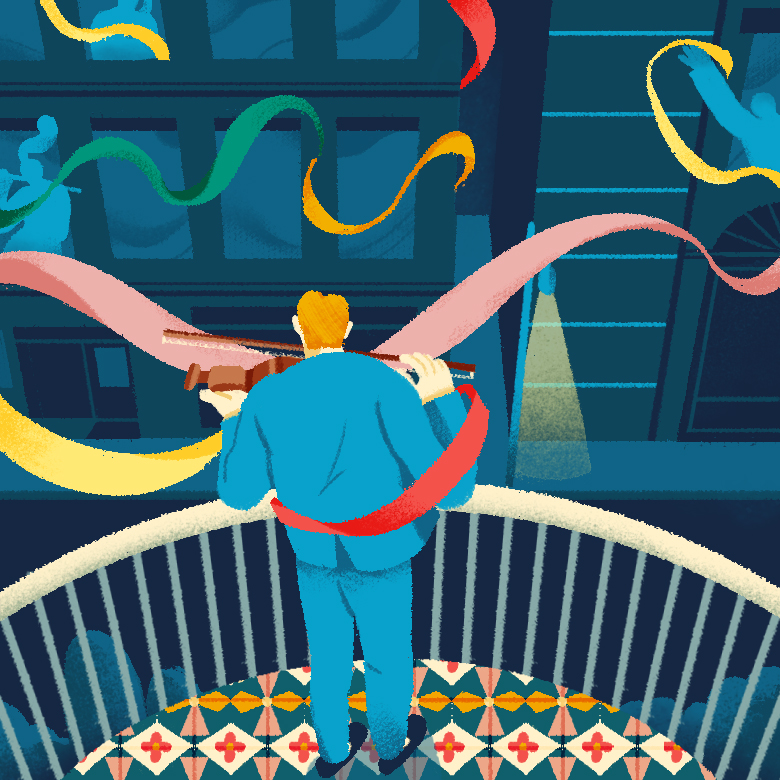
These experts and others in the international community warned of the possibility of a pandemic in recent years. The former Director of National Intelligence Dan Coats even identified a potential pandemic as a top global threat in written testimonies to Congress in 2017, 2018 and 2019, noting that it could lead to “major societal and economic disruptions.”
In 2018, however, that Global Health Security and Biodefense unit was disbanded and many of its team members were reassigned within the NSC in what National Security Advisor John Bolton describes as an effort to streamline overlap. But critics claim that the move left the U.S. underprepared, underfunded and under-coordinated for the 2019 coronavirus.
One Virus, Two Crises
Limited testing capabilities at the national level left public health and political officials scrambling for more accurate information. And because no preparations had been made in ramping up production on protective gear and ventilators, medical facilities in major hotspots were quickly stretched thin.
Faced with an impending threat of a rapidly spreading disease, America’s only defense was to enact protective, isolating policies recommended by the World Health Organization and Centers for Disease Control — quarantines, travel bans — that facilitated an economic slowdown, turning a global health pandemic into an international economic crisis.
“Initially a public health threat, COVID-19 has simultaneously attacked underappreciated vulnerabilities in a modern global economy that relies on geographic mobility, international trade, financial interdependence and extreme specialization for sustainable economic growth.”
Patrick McDonald
“Initially a public health threat, COVID-19 has simultaneously attacked underappreciated vulnerabilities in a modern global economy that relies on geographic mobility, international trade, financial interdependence and extreme specialization for sustainable economic growth,” McDonald says, describing how people stopped working, traveling and consuming because they could not safely interact freely in public.
All of this culminated into “The Great Lockdown,” or what the International Monetary Fund describes as “the worst recession since the Great Depression.” Bouncing back from it is possible, but policy responses must go beyond discussions of “economic loss, GDP or how this is going to aggregate investment and savings,” says Dean Spears, an associate professor of economics at UT Austin.
“Far from it being the environment vs. the economy, it’s the environment and the economy,” Spears explains. “A healthy environment is going to mean a healthy population. And a healthier population is going to mean a productive workforce and stronger economy.”
“A healthy environment is going to mean a healthy population. And a healthier population is going to mean a productive workforce and stronger economy.”
Dean Spears
Spears, who co-directs the research institute for compassionate economics, stresses the need to look for and anticipate real, experienced issues within our communities and others in these anxiety-ridden times to better understand what is at stake and build a more resilient, sustainable future.
“Predicting what’s going to happen is like predicting the policy decisions of politicians. There are good paths and there are bad paths, and we just don’t know,” Spears reasons. “It’s important to understand how big the problems are going to be and where to be looking for them.”
Unequal Consequences
With such grand and widespread effects, it’s easy to think of pandemics as the great equalizer — a virus cannot choose its next host, and the protective policies enacted across the globe have not spared any community from experiencing its economic aftershocks.
“There’s no universal we. We have not all benefitted equally, nor have we suffered equally, and that continues to be true,” says Pavithra Vasudevan, an assistant professor of African and African diaspora studies and women’s and gender studies at UT Austin. She explains that because we are all affected in one way or another, we don’t always see the uneven distribution of consequences crises can bring, many of which are a result of systematic oppression.
The New York Times described one consequence — a “pandemic caste system” — surfacing amid U.S. quarantine efforts: “The rich holed up in vacation properties; the middle class marooned at home with restless children; the working class on the front lines of the economy, stretched to the limit by the demands of work and parenting, if there is even work to be had.”
“COVID-19 may be a novel virus, but the resulting crises we are facing are not new,” Vasudevan says. For those at the bottom of the system, living paycheck-to-paycheck or relying on tips, she describes life as “everyday warfare” — having to struggle to survive in a racist society that sees your life as expendable.
“The pandemic has exposed the underlying cracks in our systems that may not always be so apparent.”
Pavithra Vasudevan
“The pandemic has exposed the underlying cracks in our systems that may not always be so apparent,” Vasudevan notes. “Healthcare systems that sacrifice their own workers’ health and safety for profit, and fail to serve the most vulnerable; a service-based gig economy that runs on unessential goods, yet does not provide workers enough to meet their basic needs; a gutted social welfare system that provides no safety net for childcare, elder care, or those with physical or mental disabilities needing support; a food system in which workers are overworked and exposed to pesticides and animal wastes; and a justice system that confines people in cages predominantly for being poor, and benefits from their forced and unpaid labor, with little recourse for recovery or healing.”
When people don’t have sick leave, let alone the privilege to self-quarantine, not only do they have a greater likelihood of contracting the virus, but they face an increased risk of negative health outcomes or death. We can see it playing out in confirmed cases of COVID-19.
While African Americans make up just 13% of the U.S. population, they’ve accounted for a third of the hospitalizations due to coronavirus, according to the CDC. This discrepancy is partly explained by the virus’s spread to large urban cities with more diverse populations, but it also highlights stringent health care and economic gaps that straddle racial lines.
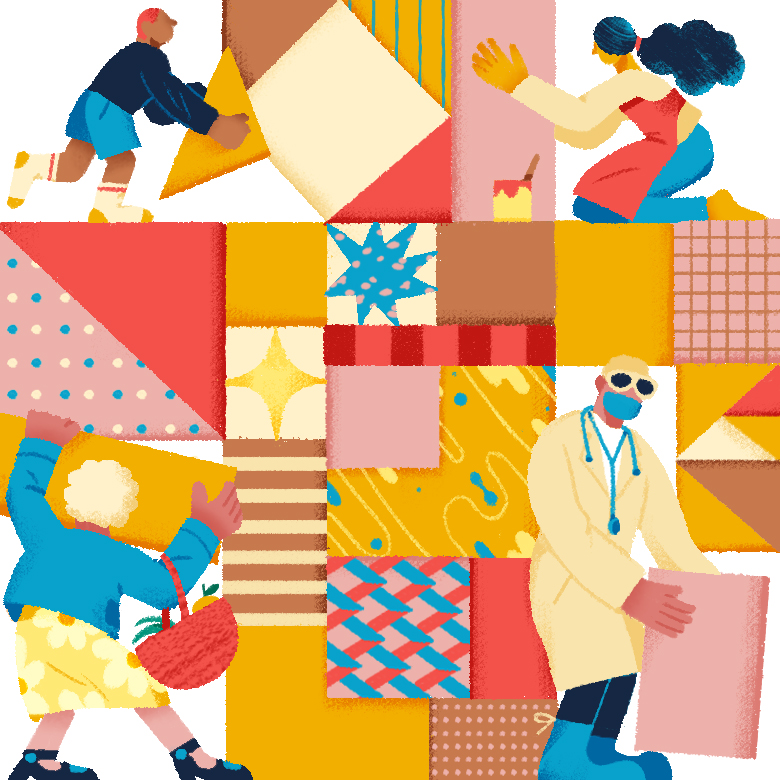
“When we talk about solutions, we must first understand that ‘health’ is not simply a matter of individual well-being. A body’s physical and mental health reflects the health of the surroundings. And as racial justice struggles teach us, whether or not we live and work in a healthy environment is fundamentally shaped by racism and colonialism,” Vasudevan says.
Though less than 12% of the U.S. population lived in poverty in 2018, African Americans (20.8%), Hispanics (17.6%) and Native Americans (25.4%) all experienced it in higher numbers. Having a low socioeconomic status not only contributes to poorer health, it also makes these populations less likely to have healthcare. According to Kaiser Family Foundation, 11% of African American, 19% of Hispanics and 22% of Native Americans lack healthcare coverage.
Much like finding a treatment for coronavirus, Vasudevan says there are no simple policy prescriptions for bridging these gaps, now deepened by the pandemic. Addressing them will require a shift in the power balance, she argues, and can’t happen unless everyone has a seat at the table.
“It’s having skin in the game in a very literal way,” Vasudevan says. “There are no solutions but to come up with solutions. We have to think about what our world would look like if we couldn’t rely on some social hierarchy that doesn’t value some people’s lives.”
UT Austin associate professor of sociology Ken-Hou Lin agrees: “An unequal society is a vulnerable society.
“There is no winner in a highly unequal society. We’re all losers when many do not have healthcare or a job that provides essential benefits and economic security.”
Ken-Hou Lin
“There is no winner in a highly unequal society,” he asserts. “We’re all losers when many do not have healthcare or a job that provides essential benefits and economic security.”
The COVID-19 pandemic has exposed some structural weaknesses within U.S. policy, he says — mainly, having an employment-based health system at a time of unprecedented unemployment. By some estimates, the U.S. could go from the lowest unemployment rate in 50 years (3.5%) to having as many as 32% of the U.S. population looking for work.
In considering how governments should respond to the current financial crisis, Lin and his Divested co-author Megan Tobias Neeley compared the government responses to the two most notable economic catastrophes in the last century — the Great Depression, which began in 1929, and the Great Recession, which began in 2008.
“Though the Depression was bigger and longer than the Great Recession, the decades following the Great Depression substantially reduced the wealth of the rich and improved the economic security of many workers. In contrast, the Great Recession exacerbated both income and wealth inequality,” Lin and Neeley argue in an editorial in The Conversation.
They describe the response to the Depression as a “bottom-up approach,” in that it brought jobs and resources to the unemployed and others that needed it and put restrictions on banks and lenders. In contrast, the response to the 2008 financial crisis aimed to save the banks and major corporations, to restore financial order in the hope that investors’ success would “trickle down” to those in need.
By 2009, the financial sector had recovered; but by 2016, white families still had 14% less wealth than before the crash and black families had 30% less.
Generations at Risk
Beyond using these important moments in history to gauge the most effective and equitable government response for the current crisis, both the Great Depression and Great Recession can tell us a lot about how we might expect younger generations to fare during this tumultuous time, says Robert Crosnoe, a professor of sociology and College of Liberal Arts associate dean of research and graduate studies at UT Austin.
“Even though they are less physically vulnerable to the actual disease, we have every reason to be greatly concerned that young people are going to be more socially, psychologically and emotionally vulnerable during this pandemic,” he states, adding that studying how young people fare when the world seems to fall apart all around them can give us a better idea of how to help them.
“Even though they are less physically vulnerable to the actual disease, we have every reason to be greatly concerned that young people are going to be more socially, psychologically and emotionally vulnerable during this pandemic.”
Robert Crosnoe
Research has shown that economic recessions, like the Great Depression and the Great Recession, have had severe negative effects on young people, particularly those who are entering the labor market.
The effects of the Great Depression were less severe for children than they were for teenagers of the era, Crosnoe explains. Not only were these teenagers more aware of the stress that surrounded them, but many were forced into greater responsibilities and experienced extra pressure in helping their families through the economic upheaval.
If that weren’t enough, this same group of people also entered World War II at the worst possible moment in their young adult lives, Crosnoe adds, throwing their work and family lives into disarray. This “uninvited double whammy,” resulted in higher rates of depression, substance abuse, divorce and shorter lives among this group of people.
To be sure, these historical moments were corrosive for everyone, but experiencing periods of unpredictability and chaos at certain developmental stages in life can be uniquely influential throughout the life course.
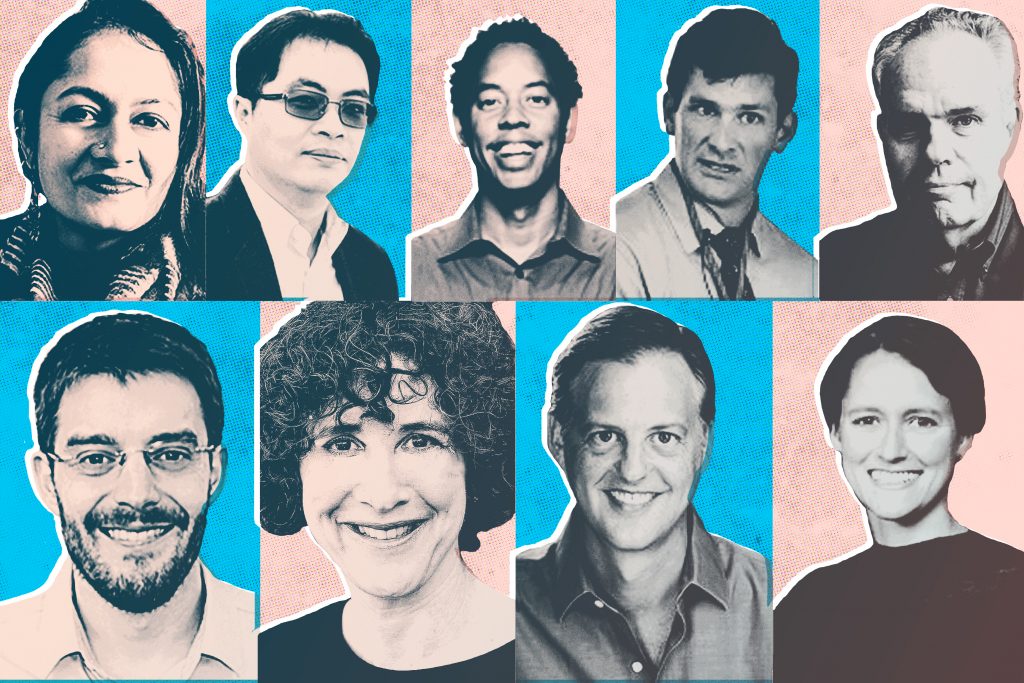
There’s a point in every teenager’s and young adult’s life where they begin to establish their own identity and pull away from their parents, often testing boundaries, Crosnoe explains. But experiencing this transition in a time characterized by strain, restriction and lack of control can lead to very emotional, conflicting and dangerous behaviors. Today that may take the form of young spring breakers partying on beaches or teenagers sneaking out to meet their friends despite shelter-in-place ordinances.
While these social restrictions are particularly difficult for young people, providing structure and creating opportunities to feel connected is essential for both the young and old. Many older adults are fit, vibrant and accustomed to being out and active throughout the day. Being shut in during well-earned retirement years can be disheartening.
Adults over the age of 80 confront additional pressures — they are at a higher risk of suffering and dying from the novel respiratory disease, says Karen Fingerman, co-director of the Texas Aging and Longevity Center at UT Austin. For older adults with chronic diseases, inability to attend medical appointments or to receive ongoing therapies may result in further physical declines, regardless of whether the older adult gets COVID-19.
“Younger healthy adults gather supplies, connect to loved ones and follow the news via smartphones and the internet,” Fingerman says, adding that only half of older adults own smartphones and that rate declines to only a fifth among adults over 80. Equally important, more than a quarter of older adults do not access the internet, putting them at risk when it comes to needing access to platforms like telehealth during this crisis.
Many older adults may also suffer isolation during stay-at-home orders. Nearly one- third of adults over age 65 and almost half of women over the age of 75 live alone, Fingerman says. But more than 90% of older adults have phones, so calling and staying connected can brighten their day. And for the most-frail older adults, calls may provide vital life support.
Staying Connected
Staying connected can feel like an impossible task in the midst of a public health crisis that calls for “social distancing,” which requires staying out of congregate settings and maintaining at least a six-foot distance from others.
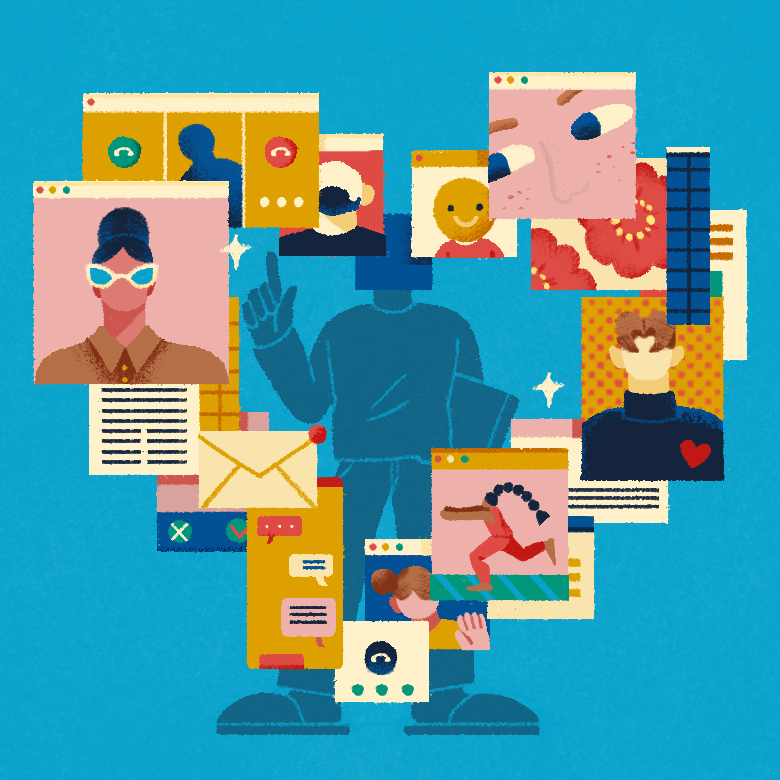
“This can affect how connected people feel,” says Marlone Henderson, an associate professor of psychology at UT Austin. ”Proximity is a major predictor of feeling like one is a part of a group. Moreover, being mimicked by others, which happens in face-to-face settings, increases how much people like others. With remote communication, such experiences are diminished.”
This can create unique challenges in educational environments, even with video technologies like Zoom and Skype. While these platforms allow people to see facial expressions and other non-verbal cues that increase the feeling of being together, they have limits in an educational environment where students typically feed off others — for example, asking questions when their surrounding peers also seem confused.
“Remote learning may make it difficult for students to learn concrete details or execute specific actions from afar,” Henderson explains.
“It’s not all zoom and gloom. When people communicate or think about people who are physically farther away, they tend to think in more abstract, broader terms. So tasks that require creativity and seeing a larger purpose may actually go more smoothly.”
Marlone Henderson
For students of color who may already question their feeling of belonging in school, this can lead to adverse health and academic consequences, he warns, adding that “educators need to be vigilant” when it comes to monitoring students’ health and well-being.
“It’s not all zoom and gloom,” Henderson assures, pointing to his own research. “When people communicate or think about people who are physically farther away, they tend to think in more abstract, broader terms. So tasks that require creativity and seeing a larger purpose may actually go more smoothly.”
Gaining Perspective
If distance makes the mind think broader, then creative thinking might just be our saving grace in solving the many complex problems associated with COVID-19.
“COVID-19 is a reminder that our world — and wealth — is still people-driven even as industries technologize and automate.”
Heather Houser
“COVID-19 is a reminder that our world — and wealth — is still people-driven even as industries technologize and automate,” says Heather Houser, an associate professor of English at UT Austin, emphasizing the need to engage with different people and perspectives to paint a better picture of what issues we’re facing and how we can deal with them. “The risk perceptions are so variable, and literature and the arts can help us work through that terrain. It can help us think about issues in a whole range of places and time periods, even going forward and looking at the future.”
She argues that understanding health issues can’t be done with data alone. Instead, we have to think about the emotions connected to it, which is what art and literature do.
“We need to think of data and information as the raw material in art,” she explains. “It’s the stuff that artists work with to stage problems, grease the wheels or even gum up the works.”
But art’s most important role, especially when it comes to tackling major issues like those we are experiencing today, is to connect us to diverse experiences.
“It not only makes it part of the imaginary — the way we perceive the world, the things we take into account and how we think about the future — it also gives some actual scenarios of what the future will hold and who will be most affected,” Houser says.
Whether we are artists creating for community conversations or stewards of society hoping to help solve these inextricable problems, interacting with the experiences of different people in different places at different moments in their lives can unveil deep-seeded issues in our society. It can provide a better understanding on where the problems are, where they could be, and how to protect against them.
“We can’t treat each issue as a separate independent problem. We have to look at them in combination with each other if we want to build a more resilient future.”
Gregory Knapp
“We can’t treat each issue as a separate independent problem,” Knapp reiterates. “We have to look at them in combination with each other if we want to build a more resilient future.”
He points to the United Nations’ 17 Sustainable Development goals as a useful model, where good health, reduced inequality, economic growth and resilient communities all land on the list. The goals may seem far-reaching, especially in these trying times. But in its initial response to the pandemic, the international community has already proven its ability to pivot and take immediate action when called on.
“It will be important to remember the lessons of this and other pandemics,” Knapp says. “We don’t know the details of future crises — volcanic eruptions, earthquakes, hurricanes, droughts and epidemics — but we know that there will be surprises, often made more insidious by human induced environmental change. That is why it is so important to promote resilience and adaptive capabilities in order to confront a wide range of future issues.”
